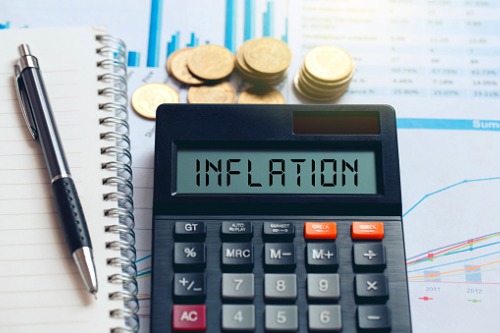Inflation’s grip on the insurance market

Authored by Covéa Insurance
Over the past couple of years, there has been a great deal of talk in the consumer press around the cost-of-living crisis, and the different ways that it’s affecting us all, in both our personal and professional lives. Our latest Personal Lines broker networking event explored in greater depth the impact of high inflation and rising claims costs, and most importantly, what more we can do to support customers as we seek to navigate our way through these challenges.
Why are premiums rising?
In the past few years there have been a range of factors that have driven up claims costs, including Brexit, the Covid-19 pandemic, the war in Ukraine and catastrophic weather events across the world. These turbulent market conditions are still being felt in many sectors in different ways, and the insurance industry has been far from immune.
After several years of lower inflation, the last 18 months have seen inflation levels climb sharply and peak, with rates hitting double figures in the first half of 2023. Though the UK inflation rate is now slowly heading down (6.7% in August 2023), this sustained inflationary pressure coupled with unsettled global markets, has led to spiralling claims costs.
In the motor and property markets we’ve seen premiums increase significantly. The latest ABI Insurance Premium Tracker quarterly data which shows the real cost impact on customers of their insurance premiums, revealed average premiums were up by 21% for motor insurance and 10% for home insurance, compared with the same period last year. These steep rises present many challenges for both customers and the wider industry, especially when insurance is so often seen as a grudge purchase as opposed to a valuable necessity to protect customers should the worst happen.
Soaring claims costs
Sharp premium increases have struggled to keep pace with unprecedented rises in claims costs. ABI figures from the latest quarter show an increase of costs of 29% for motor claims and 11% for household claims compared with the same period last year – and these costs look to be on an upward course.
When we look closer under the bonnet of the rising costs in the motor market, ABI data (from between 1 April and 30 June this year compared to the same period last year) shows claims costs being driven up by multiple factors:
Vehicle repair costs increased 46%. Repairing vehicle damage is a key driver of rising costs.Replacement car costs leapt 52%. The motor market has seen significant uplifts in vehicle hire costs. This is exacerbated by customers remaining in their replacement cars for longer periods due to supply chain issues.Vehicle theft payouts increased 53%. The increase in theft payouts is in part attributed to the rise in the average price of second-hand cars due to the lack of supply of new vehicles since the Covid-19 pandemic.
The property market has faced similar challenges to motor, with supplier networks coming under increased pressure from:
Higher transport, fuel, aviation and shipping costsWorldwide shortages of materials such as steel, cement and plastics, leading to increased prices and extended delivery timesLabour shortages in the construction industry coupled with increased labour costsIncreases in alternative accommodation costs
How vehicle technology is fuelling claims costs
In the motor market, there’s been a range of technological developments offering advanced vehicle safety features, contributing to safer customer driving experiences, however, technological evolution has also led to vehicles becoming increasingly complex and time-intensive to repair. For example, a headlamp replacement is no longer a straightforward repair, with more modern vehicles using the latest HID or LED lights and with sensors that need recalibration. And the longer a vehicle takes to repair, the longer a hire car is in use and the greater the overall claim cost. The rise in use of electric vehicles and modern cars with assisted driving systems has often led to specific parts being difficult to source, and the global shortage of semiconductors has also had a significant impact on many repairs.
Educating customers about the risks of underinsurance
It’s perhaps now more important than ever that customers understand the relationship between inflation and underinsurance, as the latest figures from Rebuild Cost Assessment show the gap between rebuilding costs and the amount buildings are insured for is continuing to widen. The data also flags that more than 9 out of every 10 buildings in the UK are currently insured for the wrong amount. There is clearly a vital role for brokers and insurers to further educate customers around inflation and their sum insured levels to help people insure their properties for the correct amount, rather than discovering at the point of claim that their cover is insufficient.
We continue to work closely with the ABI, who play a vital role in providing the market with valuable data insights on rising costs, to explore what further policy interventions may be necessary to mitigate the impact of inflation and rising market costs.
Amid uncertainty of the macroeconomic environment, there remains a crucial role for insurers and brokers to continue to deliver for customers, providing reassurance, education around premium transparency and making sure help is readily accessible.
All in it together
Amongst the turbulent economic backdrop, as an industry, we must continue to challenge ourselves to do better. We need to ask how we can continue to ensure good journeys for our customers, define what great value products and services will look like in the future, whilst at the same time seeking new ways to control premiums and claims costs with technological innovation and smarter ways of working.





